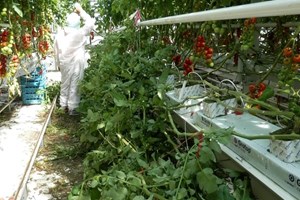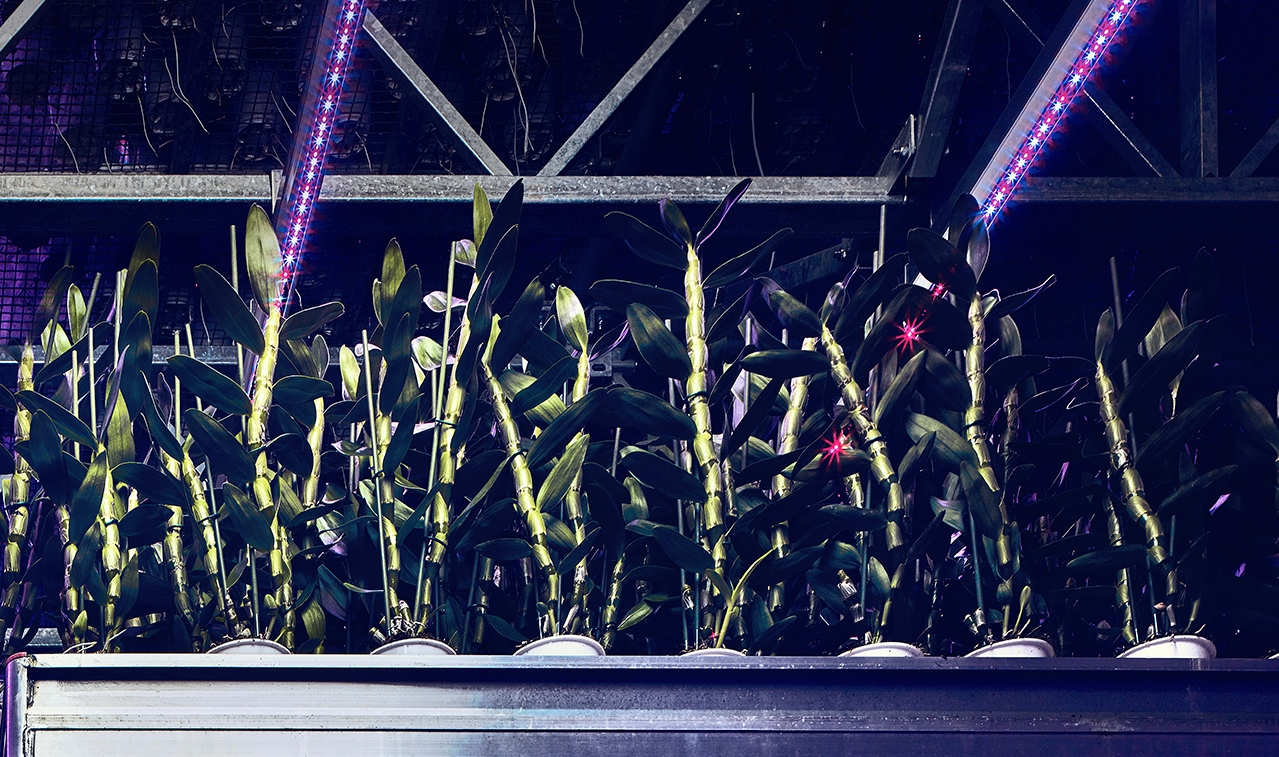At the start of a new cultivation dont tighten your crop wires

Around october/november many crop seasons are in their final stages. Old crops are being removed, greenhouses cleaned and preparations for the new season are taking off. It might be tempting to tighten the crop wire. But be aware! This can have a devastating effect on your greenhouse. This is why you have to maintain a sag in the crop wire in every section of your greenhouse How to prevent getting in trouble? The normative sag is depending on the section size and crop load and lies between a minimum of 175 and a maximum of 300 mm. With decreasing the sag, the tension on the end gable will increase fast. Together with the tension load of a screen this can result in an overload to the gutter or end post. Besides deforming the post it will also have an effect on the expansion of the greenhouse. Through the large tension force the tolerance between the roof sheets and glacing bars will be minimized and results in glass breakage. Therefore, follow the prescribed guidelines, which are described below. These are the guidelines of the ISSO 88, Quality requirements for greenhouses. If you have questions please contact your greenhouse builder or us. I’ll be happy to further inform you in this matter. Guidelines: ISSO 88 Quality requirement assembly Reference values for the load by crops and cultivation gutters. Winter and summer load Cultivation Crop load [N/m2] Crop gutter [N/m2] Summer Winter Summer Winter Strawberries 0 0 300 300 Tomatoes 200 200 130 130 Bell pepper 120 120 150 150 Remainder vegetabales 150 150 130 130
The thickness of the wire is based on the crop load, the length of the greenhouse, section distance and the sag of the wire in each section. When you change any of this parameters an overload can occur. This can result in breakage of the crop wire, damaging the wire arc in the end gable, or ‘shortening’ the greenhouse with breakage of the roof glass as a result.
Limit the crop load to the number the greenhouse is designed on. (See below table for the common crop loads). More important: maintain the sag in each section.
When installing crop wires the following requirements apply:


